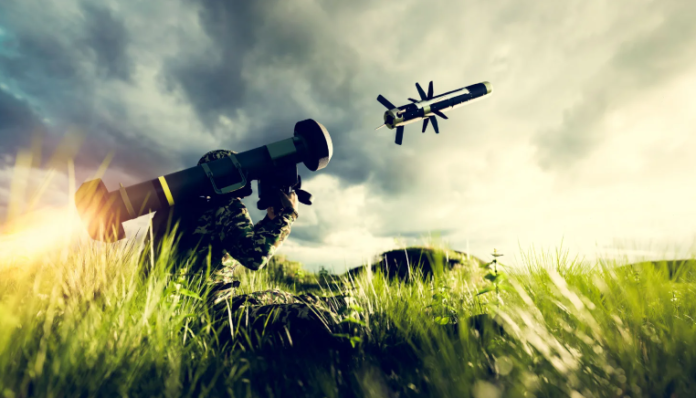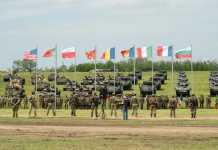GlobalData
An analysis of 58 pieces of captured Russian equipment revealed components sourced from 155 foreign companies.
Russia’s escalation of the Russo-Ukrainian conflict to a full-scale invasion in February 2022 has earned it the dubious title of the most sanctioned country on Earth. To give just a few examples: it has been cut off from the SWIFT international transactions system; the Nord Stream 2 gas pipeline was suspended and oil prices capped; thousands of individuals connected to the regime have been personally sanctioned; Russian assets equal to $1 trillion were frozen in the first week of the invasion, and a myriad of Russian (and Belorussian) consumer goods have been boycotted in the “collective West”.
Between February 2022 and March 2023, the value of exports from the EU alone into Russia fell by 82%. But the sanctions most relevant to the war effort are those on components that studies have found to be present in high-tech Russian weapons, such as cruise missiles and fighter aircraft, as well as in sensitive equipment including radars and electronic warfare complexes. Effects on Russia’s economy as a whole aside, it is important to consider what more can be done to constrain Russia’s ability to produce the weapons which are harming Ukraine’s civilians and war effort alike.
In spite of targeted sanctions for dual-use technologies, both software and hardware, an analysis of 58 pieces of captured Russian equipment in June 2023 revealed components, mostly microchips and processors, sourced from 155 foreign companies. On 13 June 2023, President Zelenskiy of Ukraine specifically lamented the finding that the Kalibr missiles used to kill 13 and wound 38 in an attack on Kryvyi Rih contained microelectronics from Western firms.
Details from this particular attack are yet to be released, but as an indicator, a study conducted by RUSI (the Royal United Services Institute, the UK’s leading defense and security thinktank) in August 2022 discovered that Kalibrs contained parts from firms such as Texas Instruments, Maxim Integrated and Xilinx Inc. Most concerning is the fact that Russia has apparently continued this practice through 16 months of ever-increasing sanctions.
Ukrainian intelligence reports that they have expanded their stocks of precision weapons, but are now continuing production of new missiles at a rate that can sustain regular attacks on Ukrainian cities – perhaps even at a greater pace than before the war. Initiatives such as the Yermak-McFaul Expert Group are working on curtailing Russian circumventions of sanctions.
It will, however, be impossible to fully prevent Russia from circumventing sanctions. Its intelligence services employ informal and illicit methods to procure microchips and other such components, often through middlemen, in third countries, and using “shell” companies posing as legitimate businesses. Western officials have highlighted Iran, the UAE, China, Armenia and Kazakhstan in particular as countries of concern in this regard.
German exports of medium-weight diesel trucks to Russia, for example, dropped to zero by May 2022 – but sales to Armenia had anomalously increased to five times the volume of trade with Russia by September of that year. With a country as large as Russia, tightly policing the physical crossing of these products over borders is also impossible. But there is one underappreciated aspect of Russia’s arms production that has been largely ignored by sanctions thus far: not the chips and sensors that go into its weapons, but the machines and tools in the factories used to produce the arms themselves.
Russia imports almost all of its precision machine tools since its own industry for these products was ruined by the economic fallout from the Soviet collapse in 1991. In just one segment, metal-cutting tools, output fell from 74,000 in 1990 to just 4,400 in 2016. It is now the fourth-largest importer of such tools in the world, and machine tools are the largest import category for Russia itself. Indeed, most of these are from the West. Specifically, tools or components such as “five-axis grinders” for complex metal shaping, digital and numerical controls for computer automation and controller equipment are all crucial for making missiles, vehicles, and electronic warfare equipment.
Russia’s Rostec firm predicted that 80% of all machine tool imports go to use directly in the defense industry. Obviously, little can be done about tools already in Russia. But the more complex they are, the more regular maintenance and spare parts are needed. Other parts of the production base open to sanctions include cutting fluids and chemicals such as polyamides, used for body armor and flight vests.
It is clear, then, that a blanket ban on exports of precision tools to Russia would have a significant impact on its already beleaguered industry – but this is a huge ask for Western countries. Machine-tool making in countries such as Germany and Italy involves numerous small and medium-sized enterprises, making it a political uphill struggle to deprive them of business. Even CAD-related software written in the West is permitted to push updates to Russian users by EU sanction exemption rules. But should pressure and incentives to further hurt Russian production capacity increase, machine tooling may yet prove a startlingly sensitive chokepoint for Russia’s war machine in the medium to long term.
SOURCE: ARMY-TECHNOLOGY.COM





